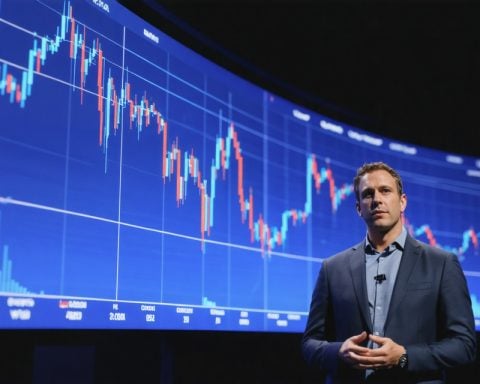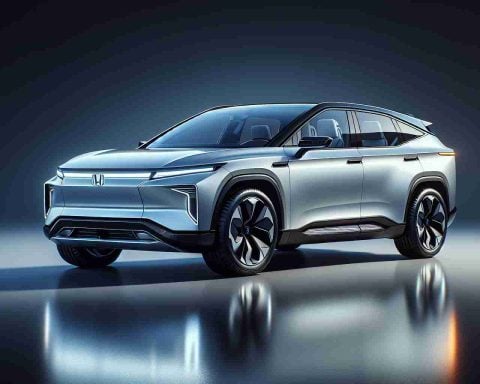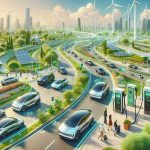- Tesla’s Q4 2024 net income dropped by 70%, despite a 2% increase in revenues to $25.7 billion.
- Strong competition and pricing pressure challenge Tesla’s market position.
- The upcoming Cybercab robotaxi and Optimus humanoid robot are central to Tesla’s innovation strategy.
- 2025 is anticipated as a critical year for Tesla’s full self-driving operations to enhance safety and expand services.
- Tesla’s Energy Generation and Storage division is thriving, with a record 11 GWh deployed and projected 50% growth in energy storage for 2025.
- Musk’s vision includes redefining urban transportation with unmanned rides, though regulatory and competitive challenges remain.
Tesla finds itself at a pivotal juncture, where shiny dreams of autonomous driving are meeting harsh financial realities. In their latest earnings report, the electric vehicle (EV) giant unveiled a staggering 70% plunge in net income for Q4 2024, compared to the previous year. Though revenues nudged up 2% to $25.7 billion, they fell short of Wall Street expectations, leaving investors anxious.
In the face of rising competition and pressure to lower prices, Tesla is pinning its hopes on groundbreaking innovations like the soon-to-launch Cybercab robotaxi and the ambitious Optimus humanoid robot. The company envisions 2025 as a “seminal year” for full self-driving (FSD) operations, aiming to surpass human safety levels, ultimately paving the way for an unsupervised FSD option and expanding its robotaxi offerings across the U.S.
Despite a struggling vehicle delivery rate, Tesla’s Energy Generation and Storage division is thriving, showcasing a record 11 GWh of deployments. As the demand for its energy products skyrockets, Tesla projects a 50% growth in energy storage for 2025, presenting a silver lining to their financial challenges.
Musk remains optimistic that enhanced autonomous driving can elevate Tesla’s value beyond leading competitors, with the potential for unmanned rides to redefine urban transportation. However, the road ahead is fraught with regulatory hurdles and competition. As Tesla navigates these turbulent waters, the question looms: can they fully realize their ambitions while maintaining profitability?
Keep an eye on this evolving story—the ride is bound to be thrilling!
Will Tesla’s Innovations Drive Its Profitability in a Competitive Market?
Tesla finds itself at a significant crossroads as its ambitions for autonomous driving clash with disappointing financial results. The electric vehicle (EV) pioneer has reported a shocking 70% decline in net income for Q4 2024 versus the same period last year, raising questions about its future stability and growth. Despite a revenue increase of 2% to $25.7 billion, this was below analysts’ expectations, heightening investor unease.
Innovations and Strategic Focus
Faced with intensifying competition and the need to lower vehicle prices, Tesla is betting heavily on its cutting-edge innovations. Two major developments are on the horizon: the Cybercab robotaxi and the Optimus humanoid robot. Tesla anticipates 2025 will be a transformative year for its Full Self-Driving (FSD) technology, aiming to enhance safety beyond human levels and roll out unsupervised FSD options for robotaxi operations nationwide.
Additionally, while vehicle deliveries may be lagging, Tesla’s Energy Generation and Storage division is experiencing significant growth, evidenced by a record 11 GWh of deployments. The company forecasts a 50% increase in energy storage capacity by 2025, providing a silver lining amid its financial woes.
Market Trends and Predictions
As the market evolves, several trends are impacting Tesla’s trajectory:
– Increased Interest in Autonomous Vehicles: As cities push towards smarter transport solutions, companies investing in autonomous technology are expected to see growth opportunities.
– Sustainability Imperatives: With a shift toward eco-friendly solutions, Tesla’s energy products are well-positioned to capitalize on this trend.
– Evolving Regulatory Environment: As Tesla navigates complex regulatory landscapes for autonomous driving, its ability to meet compliance and safety standards will be pivotal.
Musk is optimistic that by enhancing autonomous driving capabilities, Tesla can differentiate itself from competitors and explore the potential of unmanned rides, which could revolutionize urban transport.
Key Questions Answered
1. What are the implications of Tesla’s financial struggles for its future?
– Tesla’s significant drop in net income indicates a need for strategic reassessment. However, with innovations like the Cybercab and a strong focus on energy solutions, it may stabilize and recover if they successfully implement their plans.
2. How will the rollout of autonomous technologies affect Tesla’s market position?
– If successful, the autonomous vehicle solutions can position Tesla ahead of competitors, appealing to a tech-savvy consumer base prioritizing convenience and safety in urban transport.
3. What external factors could impact Tesla’s growth trajectory?
– Regulatory hurdles, competitive market pressures, and fluctuating consumer demands for EVs will all play critical roles. The company must navigate these challenges while pushing forward its technological advancements.
As the saga unfolds, the industry watches closely to see if Tesla can sustain its vision and profitability amidst increasing market and financial challenges.
For further insights, explore Tesla’s official site.


















